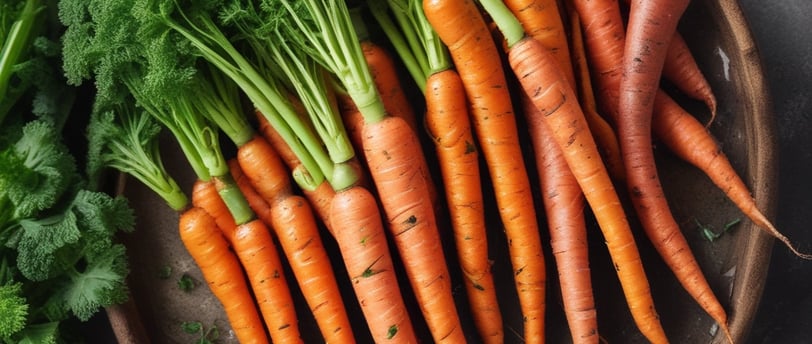Maximize Your Produce: Edible Parts of Fruits and Veggies You Might Be Missing
FOOD AS MEDICINE
Monica Rene
2/12/20253 min read


We’re often told to peel, cut, or discard certain parts of our fruits and vegetables, but did you know that some of these parts are not only edible but also highly nutritious? There’s more to produce than what meets the eye, and embracing these often-overlooked parts can boost your meals and provide extra nutrients that many of us are missing. Below are 12 parts of produce that you can start using today to make the most of your food.
Carrot Tops
The green tops of carrots are not just for composting! You can make pesto or toss them into smoothies for an extra punch of vitamins, antioxidants, and fiber.
Carrot Skin
No need to peel your carrots if you’re cooking them! The skin contains a lot of the nutrients, including fiber and beta-carotene, so leave it on when roasting or sautéing for a nutrient-packed dish.
Sweet Potato Skins
The skin of sweet potatoes is rich in fiber, antioxidants, and potassium. Simply scrub them clean and roast them along with the flesh for a delicious and healthy side.
Potato Skins
Similarly, potato skins are packed with nutrients, including fiber and iron. Roasting or baking potatoes with the skin on provides additional health benefits.
Apple Cores (and Seeds)
Though the seeds should be consumed in moderation, the core of an apple contains fiber, antioxidants, and other beneficial compounds. Next time, try including the core in your smoothies or juices!
Kiwi Skin
While it may feel odd at first, kiwi skin is actually packed with fiber and vitamin C. Just give it a wash and eat it like an apple! The golden kiwis, which don’t have the furry skin, are especially enjoyable this way.
Banana Peels
Banana peels are rich in potassium, fiber, and antioxidants. You can blend them into smoothies or cook them to make delicious recipes like banana peel bacon or banana peel curry!
Cucumber Skin
Most of the cucumber’s nutrients are stored in the skin, including antioxidants and fiber. Skip peeling and simply wash the cucumber well before slicing it up for salads or snacks.
Watermelon Rind
The rind of watermelon is full of fiber and has some surprising health benefits, including improving circulation. It can be pickled, juiced, or blended into smoothies for an extra boost.
Pumpkin Seeds and Skin
You can eat pumpkin seeds, either roasted or raw, and the skin of pumpkins can also be baked or roasted. Both are loaded with fiber and nutrients like vitamin A, beta-carotene, and antioxidants.
Beet Greens
The leaves of beets, known as beet greens, are packed with vitamins A and K, and are great in salads or sautéed. Don't throw them away!
Broccoli Stems
Instead of discarding the tough stems of broccoli, peel them and slice them up for a crunchy snack or add them to soups. They’re a good source of fiber and nutrients.
I always make these recommendations with organic produce in mind, as it helps to ensure you’re getting the most nutritious and toxin-free parts of your fruits and veggies.
A Personal Note:
For me, embracing these parts of produce has been a game-changer in our kitchen. I’ve found that buying whole carrots in bulk works perfectly now that I know I don’t have to peel them. It feels less processed, and they last longer in the fridge than baby carrots. And I never bought kiwis until I realized we could eat them just like apples! It felt a little strange at first, but now it’s one of our favorite ways to get vitamin C, especially with golden kiwis, which don’t have the fuzzy skin.
So, next time you reach for a fruit or vegetable, remember that there might be more to it than you think! Not only will you minimize waste, but you’ll also be maximizing the nutritional value of your meals.
